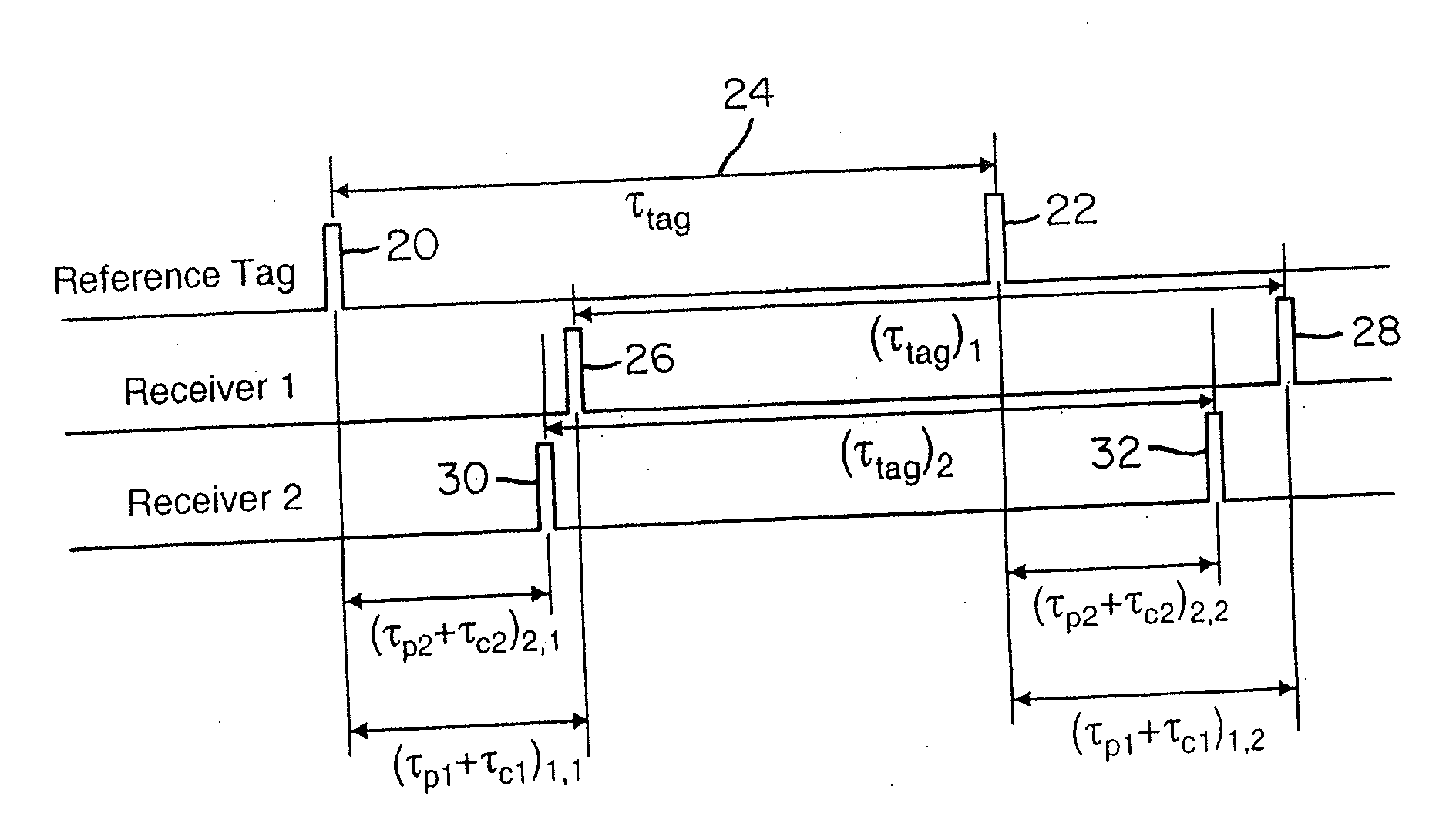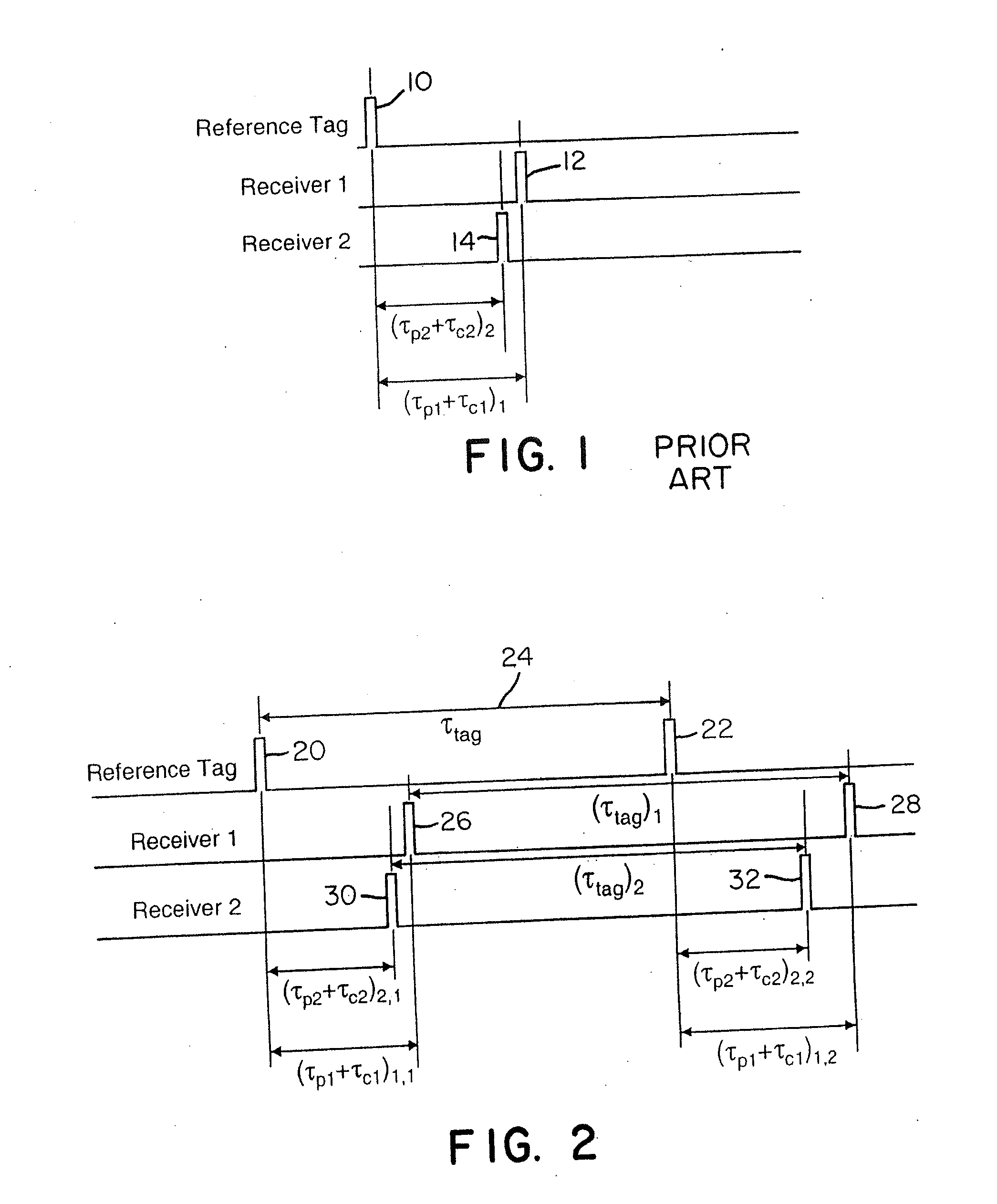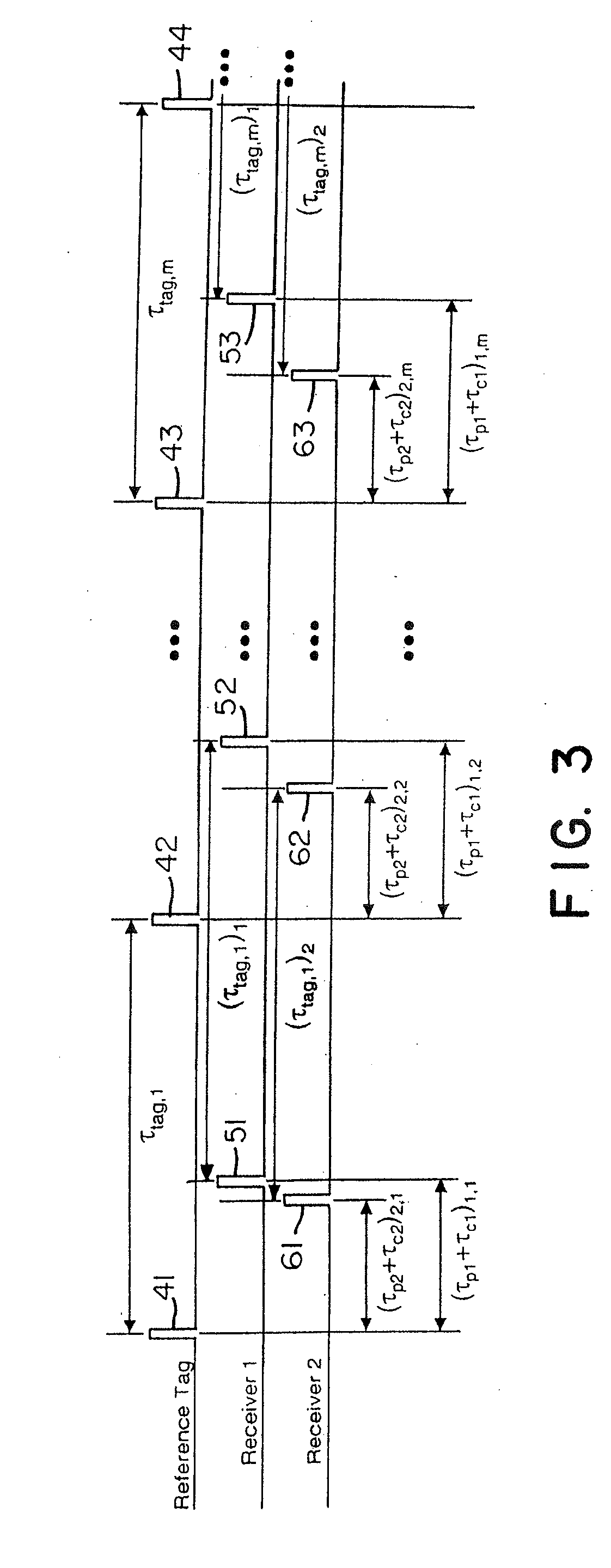Wireless time reference system and method
a time reference system and wireless technology, applied in direction finders, direction finders using radio waves, instruments, etc., can solve the problems of significant location errors, temperature changes, and high cost of timing accuracy of internal clock circuits and concomitant positioning accuracy, and achieve the effect of avoiding temperature changes, and reducing the cost of timing accuracy
- Summary
- Abstract
- Description
- Claims
- Application Information
AI Technical Summary
Benefits of technology
Problems solved by technology
Method used
Image
Examples
Embodiment Construction
[0026]To help place the invention in perspective, Anderson '409 describes a “zeroth order” technique in which times-of-arrival of a reference tag signal (as observed at spatially-located receivers) are precisely aligned using a priori knowledge of the reference tag and receiver positions (hence, a priori knowledge of reference tag propagation times from the reference tag transmitter to the individual receivers) and AP node to C node cable delays. However, as indicated above, even a small frequency offset between receiver timing circuits causes this calibration to be quickly lost.
[0027]Instead of determining timing alignment of remote clocks in multiple receivers based on time-of-flight measurement of a reference pulse and a priori knowledge of positions of the reference tag and the receivers, the present invention utilizes a relatively fixed time reference interval and a constant or known frequency offset between respective local clocks and / or higher order differences (e.g., frequen...
PUM
 Login to View More
Login to View More Abstract
Description
Claims
Application Information
 Login to View More
Login to View More - R&D
- Intellectual Property
- Life Sciences
- Materials
- Tech Scout
- Unparalleled Data Quality
- Higher Quality Content
- 60% Fewer Hallucinations
Browse by: Latest US Patents, China's latest patents, Technical Efficacy Thesaurus, Application Domain, Technology Topic, Popular Technical Reports.
© 2025 PatSnap. All rights reserved.Legal|Privacy policy|Modern Slavery Act Transparency Statement|Sitemap|About US| Contact US: help@patsnap.com



